Super User
Valmet delivers LignoBoost XS plant for Mercer Rosenthal in Germany
Valmet will deliver a LignoBoost plant for Mercer Rosenthal Lignin Center in Thuringia, Germany. The plant will extract kraft lignin from pulp mill black liquor. The extracted lignin will be used for developing various bio-based materials, which can replace fossil raw materials.
The order is included in Valmet’s orders received of the second quarter 2022. The value of the order will not be disclosed.
"Mercer is investigating lignin utilization for biobased products as one of the alternate pathways towards utilization of side streams beyond biomass energy. With Valmet's Lignoboost pilot plant installation on-site Mercer Rosenthal will further build its solid lignin knowledge and will allow partnerships for product development. Valmet and Mercer Rosenthal have a long-lasting cooperation. As an example, in 1998, the mill was rebuilt to become Germany's first kraft pulp mill," says Wolfram Ridder, Vice President Business Development, Mercer International Inc.
“LignoBoost XS™ has been developed for customers who want to enter the lignin business and start the production in smaller scale to enable full scale application development with future lignin customers. The plant offers Mercer the possibility to study different lignin qualities and their use in value-adding products. We have put special focus on designing the plant for safe and easy operation,” says Hanna Karlsson, Manager for Valmet’s Ash and LignoBoost Technology.
Technical information about the delivery
Valmet’s delivery includes a demonstration-scale lignin extraction plant, LignoBoost XS™ with a capacity of around 350 tonnes/year. The LignoBoost XS™ is a module-based installation enabling streamlined engineering and faster delivery.
The Mercer LignoBoost XS™ plant is adapted both for hardwood and softwood kraft lignin extraction. The plant is fully automated and is designed for safe and easy operation.
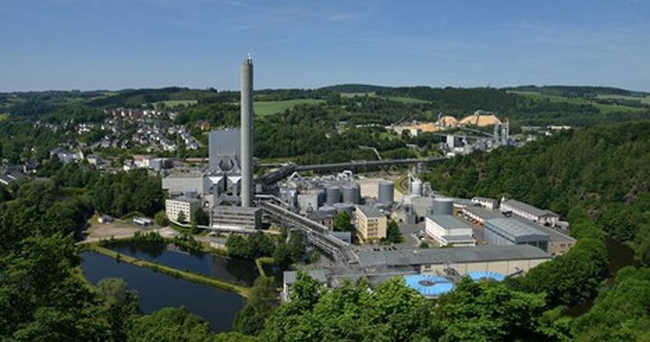 The LignoBoost XS plant will be delivered to Mercer Rosenthal mill located in Thuringia, Germany. Photo: Mercer
The LignoBoost XS plant will be delivered to Mercer Rosenthal mill located in Thuringia, Germany. Photo: Mercer
About the customer Mercer
Mercer is one of the world's largest producers of market pulp and a growing leader in the solid wood products space. The company has facilities in North America, Europe and Australia. In 2021, the company’s total revenues were USD 1.8 billion.
Today the Mercer Rosenthal mill produces about 360,000 tonnes of elemental and total chlorine-free NBSK pulp per year along with 410,000 MWh of green electricity and the capacity to produce 6,000 tonnes of crude tall oil per year.
Valmet is a leading global developer and supplier of process technologies, automation and services for the pulp, paper and energy industries. With our automation systems and flow control solutions we serve an even wider base of process industries.
We aim to become the global champion in serving our customers. Our 17,000 professionals work close to our customers and are committed to improving our customers’ performance – every day.
The company has over 220 years of industrial history and a strong track record in continuous improvement and renewal. In 2022, a major milestone was achieved when the flow control company Neles was merged into Valmet. The combined company’s net sales in 2021 was approximately EUR 4.5 billion based on the respective company figures.
Valmet’s shares are listed on the Nasdaq Helsinki and the head office is in Espoo, Finland.
Follow us on valmet.com
How Laakirchen Papier AG optimizes the papermaking process with OnEfficiency.Strength
Current raw material prices are forcing paper manufacturers to reduce production costs and further optimize the efficiency of their production facilities. Digitalization plays a key role in achieving efficiency gains and cutting costs. This is because new technologies in particular enable significant improvements in existing and new plants. They allow better monitoring of all processes and thus more precise production control, which in turn leads to higher efficiency and better availability.
Reduced starch consumptionIn addition to fiber, starch is a major raw material cost factor in the production of packaging papers. Therefore, the goal of paper manufacturers is to reduce starch application and keep the amount of starch as low as possible - without falling below the required quality level.
However, continuous optimization with conventional tools quickly reaches its limits. Paper manufacturers are confronted with the situation that they cannot directly control important quality parameters such as strength, because the measurement of the relevant parameters only takes place at the end of each tambour in the laboratory and the values are not continuously available.
Digital solutions such as OnEfficiency.Strength from Voith now offer the ability to have important quality parameters constantly available thanks to virtual sensors and to have the process optimally controlled automatically.
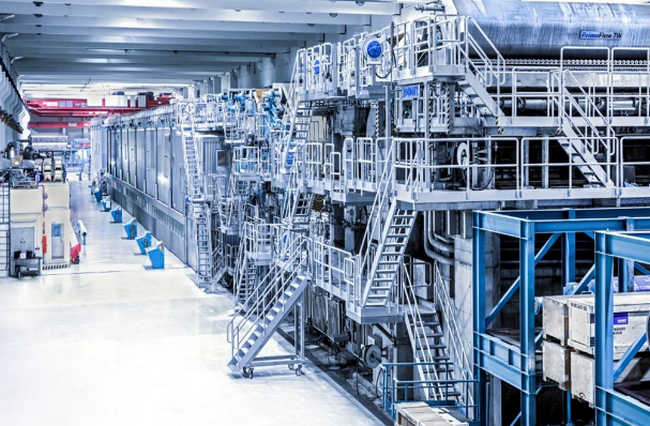
How Laakirchen Papier AG optimizes the use of starchSince 2021, OnEfficiency.Strength has been used at PM 10 in Laakirchen, Austria, to optimize starch application. A positive side effect is also the resulting reduction in steam consumption in the after-dryer section. What was previously only possible either through manual measurements in the laboratory or automatic test line measurements is now realized by Laakirchen with the use of virtual sensors: the calculation of data on the most important strength values (SCT CD, CMT and burst).
"This continuous monitoring of important quality parameters enables continuous optimization of the process in terms of cost and quality. Manual laboratory measurements, on the other hand, take up to 30 minutes after sampling, and the parameters can then only be adjusted by manual intervention," says Korbinian Hitthaler, project manager for Papermaking 4.0 at Voith OnPerformance.Lab. "Thanks to the virtual sensors, the strength values are now available in real time, so the starch application can be controlled without losing time. Thanks to the automatic control of the jet-wire difference, strength potentials between MD and CD can be optimally balanced."
Christopher Dierkes-Leifeld, PM 10 technologist at Laakirchen Papier AG, further explains: "We have been using OnEfficiency.Strength since 2021 to consistently meet quality requirements and thus optimize the paper produced on PM 10 and compensate for process fluctuations. At the same time, we have also reduced our costs, because OnEfficiency.Strength enables optimum control of the starch application quantity and the jet-wire ratio.”
Real-time prediction of quality parameters and continuous optimization of the process has not only prevented quality fluctuations, but OnEfficiency.Strength has also enabled production costs to be reduced while reliably meeting quality targets. ”Since we started with Papermaking 4.0 in cooperation with Voith, the speed of our PM 10 has been increased. Nevertheless, we have achieved the strength properties required by our customers with up to 10 percent starch savings due to optimization by the control system," concludes Dierkes-Leifeld. For PM 10, OnEfficiency.Strength helped to save four percent starch in the first year and now up to 10 percent starch in the second year, while key quality parameters such as SCT CD and CMT remained within target values.
The OnEfficiency.Strength principle: visualize, stabilize, optimizeOnEfficiency.Strength combines three modules to create a new, powerful generation of advanced process controls (APC). The control system includes virtual sensors, also called soft sensors; model predictive control (MPC); and a cost optimizer. A special feature of the virtual and self-adaptive sensors is their high predictive accuracy, typically above 90 percent.
The virtual sensors precisely predict important quality parameters. Knowing these parameters in real time enables the MPC to control the papermaking process in such a way that the targeted values are permanently achieved through continuous adjustment. The cost optimizer ensures that this is done at the lowest possible cost. To find the customer-specific cost optimum, actuators and control strategies can be individually selected and flexibly adapted.
Laakirchen Papier AG was particularly impressed with the high savings potential offered by OnEfficiency.Strength. This was calculated in the Value-Add Assessment carried out in advance. "Before installation, we carry out a so-called Value-Add Assessment with our customers, in which we calculate the savings potential of OnEfficiency.Strength based on the individual customer data," says Dr. Julius Flitsch, head of the Voith OnPerformance.Lab. "We then guarantee this savings potential to our customer. In addition, we always determine the parameters and actuators to be controlled individually, depending on customer requirements and paper machine."
Laakirchen Papier AG and Voith: Lighthouse project in Papermaking 4.0Laakirchen Papier and Voith have been working on joint pilot projects in Papermaking 4.0 since 2019. "We’ve had very good experience working with Voith. In addition to the OnEfficiency.Strength project, we also have many other Papermaking 4.0 pilot projects being implemented at the site. These include OnEfficiency.BreakProtect, OnCumulus and most recently OnView.Energy. This enables us to continuously improve our papermaking process," says Jan Reibert, Production Manager PM 10 at Laakirchen Papier AG. "Our cooperation with Voith is always at a very high level and on an equal footing. During the OnEfficiency.Strength project phase, we were in close and intensive exchange. This enabled us to discuss potential challenges together, discuss appropriate solutions and implement them in a timely manner."
About the Voith GroupThe Voith Group is a global technology company. With its broad portfolio of systems, products, services and digital applications, Voith sets standards in the markets of energy, paper, raw materials and transport & automotive. Founded in 1867, the company today has around 20,000 employees, sales of € 4.3 billion and locations in over 60 countries worldwide and is thus one of the larger family-owned companies in Europe
The Group Division Voith Paper is part of the Voith Group. As the full-line supplier to the paper industry, it provides the largest range of technologies, services, and products on the market, and offers paper manufacturers integrated solutions from a single source. The company’s continuous stream of innovations facilitates resource-conserving production and helps customers minimize their carbon footprint. With its comprehensive automation products and leading digitalization solutions from the Papermaking 4.0 portfolio, Voith offers its customers state-of-the-art digital technologies to improve plant availability and efficiency for all sections of the production process.
ANDRITZ acquires Bonetti Group, Italy
International technology group ANDRITZ has signed an agreement to acquire the Bonetti Group, headquartered in Milan, Italy. Closing of the transaction took place on June 30, 2022.
Established in 1923, Bonetti is a global manufacturer and supplier of doctor, creping and coater blades, as well as blade holders, and also provides services for paper machines. This acquisition extends and strengthens ANDRITZ’s aftermarket business and supplements the company’s current Paper Machine Service portfolio.
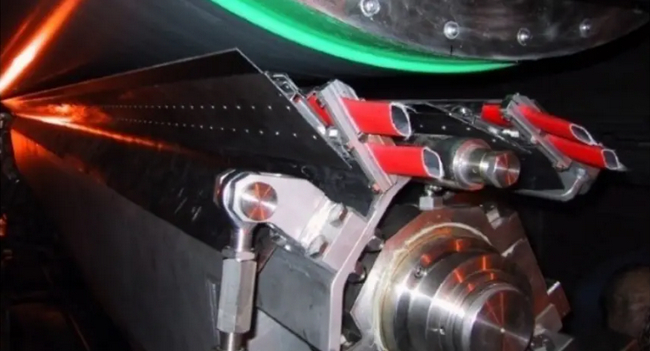 Doctor Blades & Holders © ANDRITZ
Doctor Blades & Holders © ANDRITZ
Bonetti is a well-recognized brand in the global paper machine market and known for its high-quality technology products. The company, with around 150 employees, has annual revenue of approximately 25 million euros and operates five production facilities, thereof two in Italy (Lainate, Milan and Cantalupo, Varraze), one location in Sturtevant, Wisconsin, USA, one in Hagen, Germany and one in St. Louis de France, Canada.
Joachim Schönbeck, President & CEO of ANDRITZ: “With Bonetti, we have acquired a high-tech global supplier providing essential services and wear parts to the paper industry. The acquisition fits in perfectly with our long-term strategy to acquire complementary businesses and expand our aftermarket business with its stable source of revenue and earnings.”
ANDRITZ GROUP
International technology group ANDRITZ offers a broad portfolio of innovative plants, equipment, systems, services and digital solutions for a wide range of industries and end markets. ANDRITZ is a global market leader in all four of its business areas – Pulp & Paper, Metals, Hydro, and Separation. Technological leadership, global presence and sustainability are the cornerstones of the group’s strategy, which is focused on long-term profitable growth. The publicly listed group has around 27,100 employees and over 280 locations in more than 40 countries.
ANDRITZ PULP & PAPER
ANDRITZ Pulp & Paper provides sustainable technology, automation, and service solutions for the production of all types of pulp, paper, board and tissue. The technologies and services focus on maximum utilization of raw materials, increased production efficiency, lower overall operating costs as well as innovative decarbonization strategies and autonomous plant operation. Boilers for power generation, flue gas cleaning systems, various nonwoven technologies, panelboard (MDF) production systems, as well as recycling and shredding solutions for numerous waste materials also form a part of this business area. State-of-the-art IIoT technologies as part of Metris digitalization solutions complete the comprehensive product offering.
New patent grant for PulPac and Dry Molded Fiber
The European Patent Office has decided to grant yet another patent to PulPac. The new patent relates to a method and an apparatus for forming and cutting a compacted edge of a product in a forming mould system using heat and pressure. The patented technology is an important integral part of PulPac’s Dry Molded Fiber technology and beneficial to all PulPac’s licensees.
Dry Molded Fiber is invented, patented and licensed to packaging manufacturers by PulPac. The game-changing technology is up to ten times faster than traditional fiber forming methods and offers highly competitive unit economics. In addition, being a dry process, it saves significant amounts of valuable water and energy, resulting in up to 80% lower CO2 emissions compared to alternatives.
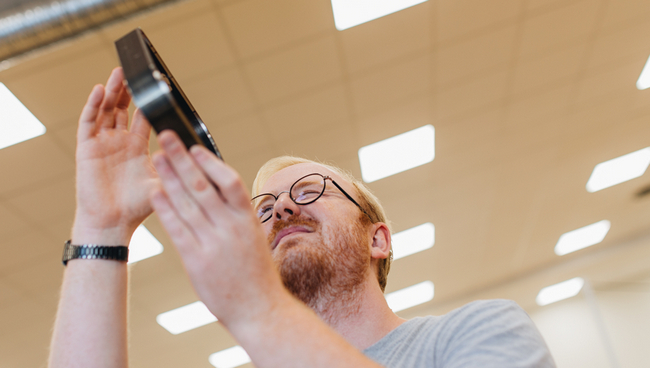 Dry Molded Fiber - the fibre-forming technology that can transform the industry and establish a new global standard for sustainable fibre-based packaging and single-use items.
Dry Molded Fiber - the fibre-forming technology that can transform the industry and establish a new global standard for sustainable fibre-based packaging and single-use items.
To date, PulPac holds 28 patent families with 85 (119 including coming nationalisations of the now granted EP-patent) granted national patents and plus 50 pending patent applications. New patent applications are filed continuously. In addition, PulPac has a substantive body of know-how and trade secrets that are shared only within the Dry Molded Fiber network. Based on the core IP, PulPac has developed a complete technology platform covering multiple areas of fiber application manufacturing. All are driven by the need for disruptive technology solutions that enable a sustainable packaging industry.
Peter Ekwall, CIPO, comments, “Margins for commodity products are narrow and there is a cost challenge to sustainability. We can offer a patented manufacturing technology that is good for business, customers, and the world we share. Licensing from PulPac gives access to IP and world-leading know-how within all dimensions of Dry Molded Fiber; from generic R&D, material, barriers, applications, tooling, machinery, industrialization, production and patent protection."
About PulPac
PulPac provides the packaging industry with a groundbreaking manufacturing technology for low-cost, high-performance fiber-based packaging and single-use products. By pioneering the technology of cellulose molding PulPac enables their customers to replace single-use plastics with a sustainable and cost competitive alternative globally.
For additional information about PulPac, please visit www.pulpac.com
The Paper value chain is ready to take circularity to a new level with 2030 recycling rate target
Representatives of the European paper value chain gathered yesterday in Brussels have pledged to recycle 76% of all paper consumed by 2030. The commitment was taken during the 8th edition of the European Paper Recycling Awards which saw two projects, breaking new ground for how far paper recycling can go, receiving the highest distinction in the European paper recycling community. The video recording of the event is available online.
The new, ambitious recycling rate of 76%, calculated by dividing the recycling of used paper by the total paper and board consumption, should be reached by the year 2030. It represents a best-in-class performance both at global level and across material industries, as paper and board is the most recycled material in Europe.
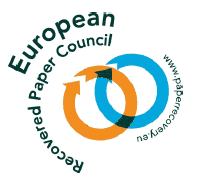 The commitment is laid out in the new European Declaration on Paper Recycling 2021-2030 published today. The document sets out measures to optimise the management of paper at every step of a continuous recycling loop. This entails a variety of operations, from paper and board manufacturing, its conversion into products and prints, through to its collection, sorting, and recycling. Each step in the process is a distinct industrial sector with only some degree of horizontal integration, making cooperation a must to reach the ambitious recycling target.
The commitment is laid out in the new European Declaration on Paper Recycling 2021-2030 published today. The document sets out measures to optimise the management of paper at every step of a continuous recycling loop. This entails a variety of operations, from paper and board manufacturing, its conversion into products and prints, through to its collection, sorting, and recycling. Each step in the process is a distinct industrial sector with only some degree of horizontal integration, making cooperation a must to reach the ambitious recycling target.
Download the European Declaration on Paper Recycling 2021-2030.
The industries co-signing the declaration state however that several enabling conditions from EU and local authorities need to be met. Including to limit the use of paper waste for energy recovery purposes and to ensure that paper is separately collected to preserve the quality of the material.
Separate paper collection is also a prerequisite for higher levels of recycling and needs to be further promoted. However, the paper value chain is also pushing boundaries for what additional products could be recycled, and how to access paper waste which is not finding its way to separate collection. The European Paper Recycling Award winning projects tackle both these challenges. EnEWA, a research and development project financed by the German Federal Ministry for Climate Protection, is focusing on the optimisation of sorting, cleaning and recycling paper even when it is mixed with other residual household or commercial waste. Awarded in the “information and education” category, the CELAB project is a cross-industry initiative to recycle self-adhesive labels.
Quotes
“The projects or campaigns competing for the awards are all game changers in the way we recycle paper in Europe. They will contribute to achieving our ambitious goal of a 76% paper recycling rate by 2030. This is an ambitious target and every piece of paper and board bringing us closer to it counts!”
Annick Carpentier - Chair EPRC (European Paper Recycling Council)
“The recycling rates we have already reached put paper and board as industry frontrunners. Both ongoing initiatives and planned steps will allow us to close the circular economy loop even further. The innovative projects presented yesterday at the EPRC Awards are timely examples of what it will take to get there.”
Ulrich Leberle - Secretary EPRC (European Paper Recycling Council)
ANDRITZ to supply production technology and key process equipment to Nanning Sun Paper, China
International technology group ANDRITZ has received an order from Nanning Sun Paper to deliver state-of-the-art and highly efficient pulp production technologies for the fiberline and lime kiln plant as well as energy-saving OCC lines and a complete reject treatment system for RDF (refuse-derived fuel) production at its pulp and paper mill in the city of Nanning, Guangxi Province, China. Start-up is planned for mid-2023.
The ANDRITZ scope of supply is on full EPS (engineering, procurement, supervision) basis and includes:
- China’s largest high-kappa fiberline with a capacity of 1,600 adt/d. The hardwood line includes a TurboFeed chip feeding system, Lo-Solids continuous cooking, blow line refiners, screen room, LC refiners and highly efficient washing with a multi-stage DD-Washer drum displacer washer, a COMPACT PRESS wash press, and a GF-Filter advanced vacuum drum filter washer. ANDRITZ’s fiberline technology ensures highest operating time and maximum washing efficiency as well as reductions in fresh water, chemicals and energy consumption, thus minimizing environmental impact.
- Energy-efficient lime kiln plant with a capacity of 450 t/d burnt lime, including a LimeDry lime mud washing and dewatering filter, a LimeKiln feeding system, a LimeKiln shell, riding rings, roller sets and driving mechanism, as well as a LimeCool and a LimeFire burner. Efficient lime mud washing with a LimeDry filter provides high-quality lime mud to minimize lime kiln emissions. ANDRITZ’s proven lime kiln technology and worldwide project references ensure optimized energy consumption and high availability of lime kiln operations.
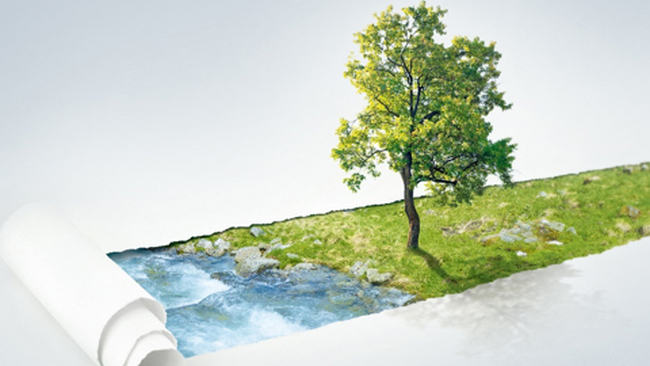 ANDRITZ offers innovative technologies and services for pulp, paper and board producers that enable resource savings and reduce environmental impact. © ANDRITZ
ANDRITZ offers innovative technologies and services for pulp, paper and board producers that enable resource savings and reduce environmental impact. © ANDRITZ
- Two complete OCC lines, as well as approach flow and broke systems. The new stock preparation lines will feature a capacity of 1,550 and 1,400 t/d, respectively, and process LOCC for production of high-quality liner board. The delivery includes a PrimeSolve LC pulping system with advanced set-up and the latest detrasher rotor design for highly efficient reject removal and excellent slushing performance. In addition, the scope of supply contains PrimeScreen X screens with state-of-the-art rotor design, enabling high screening efficiency, low power consumption and superior stock quality with low fiber loss. The ANDRITZ Ultra-High Dispersing technology allows a remarkably high dispersing consistency for greater dirt and sticky fragmentation, enhanced fiber strength, and steam savings of up to 30%.
- ADuro reject treatment system processing 210 t/d of coarse rejects and 75 t/d of pulper rags from the new OCC lines for production of RDF as a high-quality substitute fuel fraction. The system comprises ReCo Reject Compactors for optimum dewatering of coarse rejects, ADuro shredders for efficient shredding of rejects and pulper rags, and metal separators to extract the valuable steel fraction.
With this order, ANDRITZ once again demonstrates its strong global position as a supplier of state-of-the-art paper technology focusing on environmentally friendly production. The high-kappa fiberline, lime kiln plant and reject treatment system are repeat orders from Sun Paper.
The Sun Paper Group launched Nanning Sun Paper Co., Ltd., in February 2022. Sun Paper will invest around 20 billion RMB in construction of the Forest Pulp Paper Integration and Supporting Industrial Park Project, with an annual output of 5.25 million tons.
ANDRITZ GROUP
International technology group ANDRITZ offers a broad portfolio of innovative plants, equipment, systems, services and digital solutions for a wide range of industries and end markets. ANDRITZ is a global market leader in all four of its business areas – Pulp & Paper, Metals, Hydro, and Separation. Technological leadership, global presence and sustainability are the cornerstones of the group’s strategy, which is focused on long-term profitable growth. The publicly listed group has around 27,100 employees and over 280 locations in more than 40 countries.
ANDRITZ PULP & PAPER
ANDRITZ Pulp & Paper provides sustainable technology, automation, and service solutions for the production of all types of pulp, paper, board and tissue. The technologies and services focus on maximum utilization of raw materials, increased production efficiency, lower overall operating costs as well as innovative decarbonization strategies and autonomous plant operation. Boilers for power generation, flue gas cleaning systems, various nonwoven technologies, panelboard (MDF) production systems, as well as recycling and shredding solutions for numerous waste materials also form a part of this business area. State-of-the-art IIoT technologies as part of Metris digitalization solutions complete the comprehensive product offering.
Sulzer to write off assets in Russia and Poland
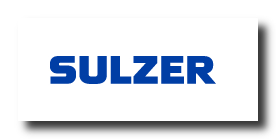 Following the Board’s decision to initiate the process of exiting the Russian market and the closing of the Polish businesses, the company has decided to write off most of its assets in both countries. After careful analysis of all options, Sulzer expects a one-time impact in the range of CHF 125m to CHF 135m at current foreign exchange rates. CHF 125m will be recognized in H1 of 2022.
Following the Board’s decision to initiate the process of exiting the Russian market and the closing of the Polish businesses, the company has decided to write off most of its assets in both countries. After careful analysis of all options, Sulzer expects a one-time impact in the range of CHF 125m to CHF 135m at current foreign exchange rates. CHF 125m will be recognized in H1 of 2022.
The one-time asset write-offs will have no significant impact on Sulzer’s operational results, however on Net Income, which was CHF 86m for H1 2021 and CHF 141m for the full year, respectively. Sulzer will report its H1 results on July 29, 2022.
Sulzer is a global leader in fluid engineering. We specialize in pumping, agitation, mixing, separation and purification technologies for fluids of all types. Our customers benefit from our commitment to innovation, performance and quality and from our responsive network of 180 world-class manufacturing facilities and service centers across the globe. Sulzer has been headquartered in Winterthur, Switzerland, since 1834. In 2021, our 13’800 employees delivered revenues of CHF 3.2 billion. Our shares are traded on the SIX Swiss Exchange (SIX: SUN). www.sulzer.com
Investor Relations: Christoph Ladner, Head of Investor Relations
Phone +41 52 262 30 22, This email address is being protected from spambots. You need JavaScript enabled to view it.
Tissue paper - a sustainable industry for centuries
Where thinking long-term is a way of life
The tissue paper industry is sustainable by design. Its raw material is a renewable resource with a growing cycle of around 50 years, so sustainability has been a way of life for the sector for centuries.
Thanks to sustainable forestry practices, the tissue paper industry grows and regenerates its raw material in order to provide a constant supply for future generations. This way it preserves not just our planet, but also the future of the sector. Trees play a crucial role in the Earth’s eco-system, capturing and storing billions of tonnes of carbon dioxide while at the same time providing the planet with much needed, breathable oxygen. In fact, trees emit particularly large quantities of oxygen during their growing phase – underlining the importance of continually replanting trees for the future.
Driving sustainability across the value chain
As part of an industry that has always had to look to the future, tissue paper producers are committed to driving sustainable practices across their value chain. The paper sector is signatory to the Legal Logging Code of Conduct, condemning illegal logging, and over 80% of the pulp purchased by the European paper industry is certified by an environmental management system. By adhering to international and national third-party certification schemes the sector demonstrates its credibility and reassures both its customers and the end consumer. Some companies also carry labels on their products that underline their high environmental credentials - such as the EU Ecolabel, PSC and PEFC.

And it doesn’t stop there. The tissue paper industry is working hard to drive sustainability and circularity across its supply chain – from the water and energy that it uses in its production processes through to the transportation of tissue paper products and their recovery and recycling at end-of-life. It uses mainly bark and twigs and waste from the lumber industry in its production and many tissue paper producers are using innovation to create closed-loop products and processes which will serve to increase product recovery and minimise waste.
Focus is also being placed on reducing greenhouse gas emissions and transferring to renewable energy. Some 58% of Europe’s pulp and paper industry’s energy consumption already comes from renewable biomass and the sector is proud to be Europe’s single largest user and producer of bio-energy. The sector is also working to reduce its water use and is an active partner in the development of water stewardship. Paper making machines have reduced their water consumption by 30% over the past decade and, since 1970, the amount of water needed to produce one tonne of pulp has fallen five-fold.
Looking ahead to a circular future
While the tissue paper industry has always operated sustainably, today circularity and the importance of achieving sustainable consumption and production are being embraced by governments and societies around the world and are enshrined in the UN Sustainable Development Goal 12.
Through innovating to reduce, reuse and regenerate throughout its value chain, the tissue paper sector is working to deliver against the three pillars of sustainability – environmental, economic and societal – and continuing to produce products that are essential to protecting the health of our planet’s citizens while also protecting the planet itself.
About ETS
ETS is the European Tissue Paper Industry Association. The members of ETS represent the majority of tissue paper producers throughout Europe and around 90% of the total European tissue production. ETS was founded in 1971 and is based in Brussels. For more information: www.europeantissue.com
Valmet to deliver a recovery boiler rebuild to Mufindi Paper Mills in Tanzania
Valmet will deliver a recovery boiler rebuild and technology upgrade to Mufindi Paper Mills Ltd. in Mgololo, Tanzania. The upgrade will have a significant effect on the performance and capacity of the recovery boiler originally commissioned in the 1980’s.
The order is included in Valmet's orders received of the second quarter 2022. The value of the order will not be disclosed. The project’s duration is approximately one year, with the installation being planned to take place in August 2023.
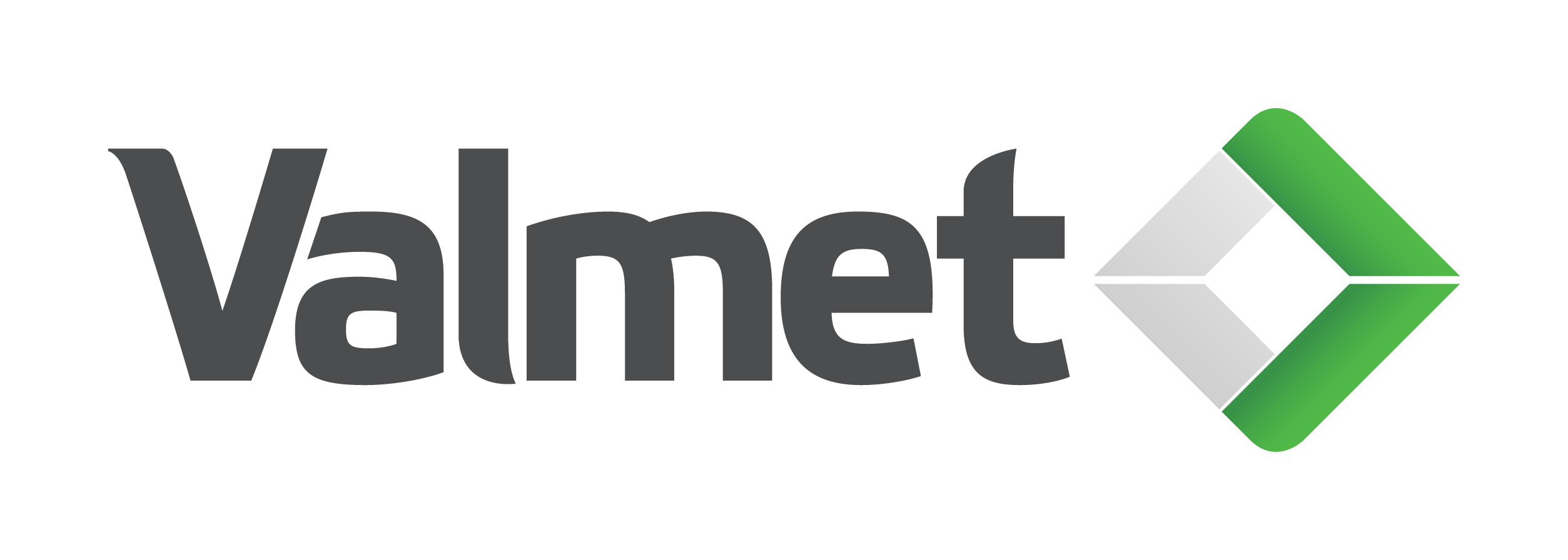 Prior to Mufindi Paper Mill’s investment decision, Valmet carried out a thorough boiler inspection and a pre-engineering study to define the scope and the urgency of the recovery boiler rebuild.
Prior to Mufindi Paper Mill’s investment decision, Valmet carried out a thorough boiler inspection and a pre-engineering study to define the scope and the urgency of the recovery boiler rebuild.
“An extensive rebuild was considered necessary to prolong the lifecycle of the recovery boiler originally manufactured by Tampella, Finland, in 1985. The target is to restore the boiler’s original design load but leave room for a further capacity increase in the coming years. We are excited about the possibility to start a new era in our partnership with Mufindi Paper Mills with this upgrade,” says Marko Nokkala, Senior Sales Manager South Africa, Energy Sales and Service Operations, SEMEA, Valmet.
The project is the largest brownfield project for Valmet in the region in over 20 years.
Technical information about the delivery
The delivery consists of key pressure parts such as the superheater replacement, lower furnace rebuild, main steam line and new smelt spout system together with some key auxiliary equipment such as burners, soot blowers and pumps, and a comprehensive spare parts package.
About the customer
Mufindi Paper Mill is an integrated pulp and paper mill located in Mgololo, Tanzania. It manufactures virgin kraft liner and natural sack grades mainly for the African market.
Read more: Valmet’s services for chemical recovery
Valmet is a leading global developer and supplier of process technologies, automation and services for the pulp, paper and energy industries. With our automation systems and flow control solutions we serve an even wider base of process industries.
We aim to become the global champion in serving our customers. Our 17,000 professionals work close to our customers and are committed to improving our customers’ performance – every day.
The company has over 220 years of industrial history and a strong track record in continuous improvement and renewal. In 2022, a major milestone was achieved when the flow control company Neles was merged into Valmet. The combined company’s net sales in 2021 was approximately EUR 4.5 billion based on the respective company figures.
Valmet’s shares are listed on the Nasdaq Helsinki and the head office is in Espoo, Finland.
Follow us on valmet.com
What Would Ben Franklin Do?
Mail centre professionals, who already operate in a challenging business environment, are increasingly faced with the task of responding to the popular, but the scientifically flawed narrative that the paper critical to their operations is somehow environmentally unsustainable. If this describes you, then Ben Franklin, father of the Postal Service and first U.S. postmaster general, offers some sage advice: “An investment in knowledge pays the best interest.”
In our increasingly digital world, knowledge – knowing the facts about the unique sustainability of paper – is a potent antidote to the common environmental myths used to justify replacing paper mail with electronic communications: that paper production and use destroys forests, and is a major contributor to climate change, consumes enormous amounts of water and generates excessive amounts of waste.
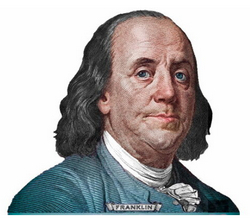 Whether you are the leader of an in-plant mailing operation or the CEO of a company delivering mailing solutions to customers around the globe, these “go paperless” conversations will eventually land on your doorstep, if they haven’t already. To demonstrate to your management, investors, customers and other stakeholders that print on paper is a truly sustainable choice, both today and in the future, you need to be armed with the facts.
Whether you are the leader of an in-plant mailing operation or the CEO of a company delivering mailing solutions to customers around the globe, these “go paperless” conversations will eventually land on your doorstep, if they haven’t already. To demonstrate to your management, investors, customers and other stakeholders that print on paper is a truly sustainable choice, both today and in the future, you need to be armed with the facts.
Fortunately, there is an arsenal of data to help you make the case for the sustainability paper.
Myth: Using paper causes deforestation and destroys forests
In the United States, trees to make paper are grown, harvested and regrown using sustainable forest management practices that perpetuate infinitely renewable forestlands. While the paper industry was producing products that enrich the lives of consumers, the net forestland area in the United States actually increased 18 million acres between 1990 and 2020, according to the latest Global Forest Resources Assessment by the UN Food and Agriculture Organization (FAO). That’s an area equivalent to 1,200 NFL football fields every day!
The U.S. Forest Service (USFS) reports that less than 2% of U.S. forestland is harvested each year, compared with 3% that is disturbed annually by natural causes like fire, insects and disease, and most of this 2% of harvested wood is used for non-paper purposes.
Contrary to the myth that paper destroys forests, the production of paper products is a powerful economic engine and driving force in keeping U.S. lands forested. By providing a dependable market for responsibly grown fiber, the paper industry encourages landowners to manage their forestland instead of selling it for development or other non-forest uses. More than half (58%) of the forestland in the U.S. is privately owned and managed, mostly by millions of small landowners, and they are under no obligation to keep their lands forested. Without the economic incentive provided by the paper industry, untold millions of acres of forestland would likely have been lost permanently to commercial land development – converted to building projects, strip malls or parking lots.
So, is deforestation in the U.S. a real concern? Yes, but using paper is not the cause. The FAO defines deforestation as the permanent loss of forestland. In fact, the definition specifically excludes logging for the production of paper and other products because trees in these “working forests” are expected to grow back, either through natural regeneration or sustainable forestry practices. In the United States, the primary cause of forest loss is rapidly expanding urban development, according to the USFS.
Myth: Paper is a major cause of greenhouse gas emissions that contribute to climate change
According to the most recent data available from the U.S. Environmental Protection Agency (EPA), the pulp and paper industry is responsible for only 0.5% of total annual U.S. GHG emissions. These very low emissions are due to decades of energy efficiency and process improvements at U.S paper mills, and to the fact that the U.S. paper industry generates two-thirds of the energy to manufacture its products using renewable, carbon-neutral fuels, primarily biomass.
According to the EPA, the paper industry produces more carbon-neutral bioenergy than any other industrial sector, using mostly wood-based leftovers from the papermaking process. This bioenergy use prevents around 181 million metric tons of CO2 from entering the atmosphere each year – roughly equivalent to removing 35 million cars from the road.
Myth: Paper manufacturing consumes enormous amounts of water
While it’s true that the paper industry uses large amounts of water to manufacture its products, most of that water is not consumed in the manufacturing process, according to the National Council for Air and Stream Improvement (NCASI). NCASI reports that water used in the papermaking process is recycled up to 10 times in a typical paper mill, and then nearly 90% of that water is cleaned to meet federal and state clean water standards before it is returned to its source. Most of the remaining water evaporates back into the environment, with around 1% retained in the manufactured paper.
Myth: Paper generates excessive amounts of waste
When it comes to circularity, the idea that products should be reused or recycled, paper has all other materials beat hands down. Thanks to the paper industry’s voluntary, multi-billion dollar investments in commercial paper recovery infrastructure and to the commitment of millions of organizations and individual Americans who choose to recycle every day, U.S. paper recycling has nearly doubled over the past 20 years. At 68%, the EPA reports that the U.S. paper recovery rate is higher than any other material in the country, including plastics (9%), glass (25%) and metals (34%). The recovery rate of corrugated cardboard is 89%.
Myth: Electronic communication is better for the environment than paper
The miniaturization of digital devices and the “invisibility” of the infrastructures needed to support them leads many to underestimate the environmental footprint of digital technology. This phenomenon is reinforced by the widespread availability of services on the “cloud,” which makes the physical reality of use and the direct environmental impacts of digital technology all the more imperceptible.
Any organization considering a paperless strategy for sustainability reasons must recognize that digital technology places enormous and growing burdens on the environment. Here too, the proof is in the data.
First, consider the environmentally intensive drilling and mining required to extract source materials from the earth. Computers, tablets and other electronic devices are made with non-renewable resources – fossil fuels, chemicals, precious metals, rare earth minerals and toxic minerals like lead, mercury and arsenic that are dangerous when released into the environment. Cisco, the worldwide leader in internet technology, projects that North America will have 5 billion networked devices in 2023, up from 3 billion in 2018 – a 40% increase. Cisco also projects that the average per capita number of devices and connections in the U.S. will reach 13.6 in 2023, far higher than the estimated 2023 global average of 3.6 devices per person.
Electronic devices and the massive server farms that support them are powered using mostly fossil fuels (only 17% of U.S. energy is generated from renewable sources). The Shift Project, a think tank focused on the shift to a post-carbon economy, reports that energy consumption for digital devices is increasing 9% each year, and the share of digital technologies in global greenhouse gas emissions increased by half between 2013 and 2019, from 2.5% to 3.7%. A 2015 study (Andrae and Elder) estimates that the information technology sector could use as much as 51% of global electricity and contribute 23% of global greenhouse gas emissions by 2030.
And according to the most recent Global E-Waste Monitor report, electronic devices create nearly 7 million metric tons of e-waste annually in the U.S., and only 15% of that e-waste is recycled. Most of the remaining e-waste is either burned, landfilled or dumped.
Paper: A responsible environmental choice
Digital technology has become an essential part of our everyday lives and is likely making beneficial contributions to your mailing operations, but it also has wide-ranging environmental impacts that continue to grow. While all manufacturing processes have an environmental footprint, the fact that paper is made with an infinitely renewable resource, is manufactured using mostly renewable, carbon-neutral energy, consumes very little water, is recyclable and is recycled more than any other material, makes a strong case for its continued use.
Two Sides North America (twosidesna.org) is a non-profit organization whose members span the entire print, paper, paper-based packaging and mail value chain. Funded entirely by membership dues, Two Sides is the only industry organization that directly challenges unsubstantiated environmental claims about paper made by corporations, the media, government agencies and others. Two Sides also supports its members with factual, science-based resources to supplement their own sustainability efforts. Learn how to join at twosidesna.org/become-a-member/.
